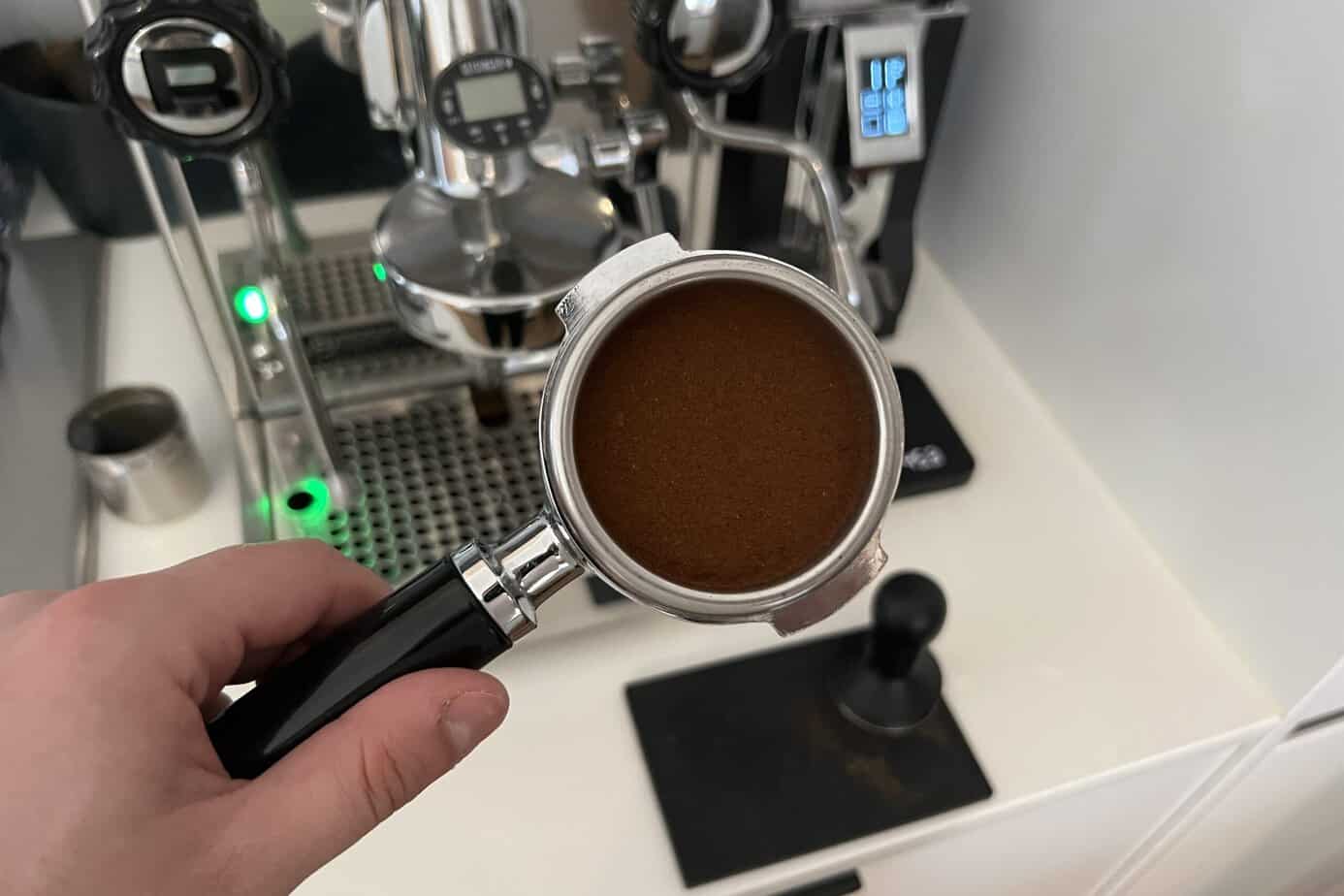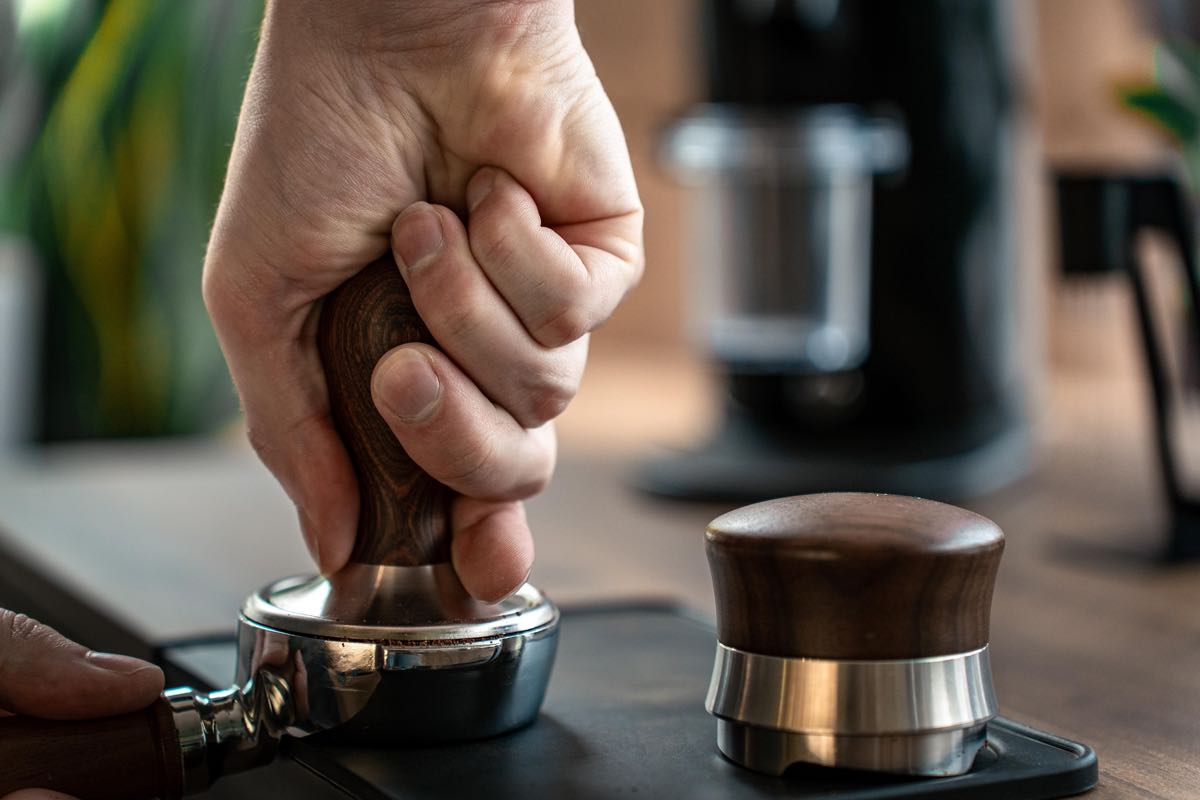When I first ventured into making espresso at home, I was both excited and a bit overwhelmed. I vividly remember my first attempt: I pressed the tamper down with all my might, assuming that more pressure would lead to a better shot. The result? A bitter, over-extracted espresso that was far from the smooth, rich cup I had envisioned. Over time, I realized that tamping isn’t about sheer strength—it’s about consistency and technique. If you’re new to espresso or looking to improve your skills, understanding the right tamping pressure can make all the difference. Explore the features and performance of this machine in our Philips 5500 LatteGo review

Why Is Tamping Important for Espresso?
Tamping plays a crucial role in the espresso-making process. By compressing the coffee grounds, tamping creates a uniform surface through which the water can pass evenly during extraction. Without proper tamping, you risk creating air pockets, which can lead to "channeling." This is when water finds the easiest path through the grounds, causing uneven extraction and a weak shot. Dive into the details of the Philips 5400 LatteGo review
Proper tamping ensures that water flows evenly through the coffee bed, extracting the full range of flavors. Without it, the water may pass through too quickly, leading to under-extraction and a sour, thin shot. Compare these two models in our Philips LatteGo 5400 vs 4300 review
How Much Pressure Should You Use?
While many espresso guides suggest applying around 30 pounds (13.6 kg) of pressure, this number is just a guideline. For home baristas, the key is consistency and technique rather than an exact weight. What matters most is pressing the tamper down until the grounds stop compressing, indicating they are firm and compact. Discover the differences between these machines in our Philips 3200 vs 4300 vs 5400 review
Once the coffee grounds are compressed, applying more pressure won’t enhance the extraction and could even lead to over-extraction, resulting in a bitter shot. The focus should be on keeping the tamper level and applying steady, even pressure throughout the tamping process. Learn how these two models compare in our Philips 3200 vs 4300 review
Steps for a Perfect Tamp
To achieve consistent tamping, follow these simple steps:
1. Evenly Distribute the Grounds
Before tamping, ensure that the coffee grounds are evenly spread in the portafilter. Uneven grounds can lead to an uneven tamp, causing channeling. You can tap the portafilter gently or use a coffee distribution tool to ensure an even layer. Uncover the key distinctions in our Philips 3200 vs 5400 review
2. Hold the Tamper Correctly
Grip the tamper with your wrist straight and your elbow at a 90-degree angle. This posture will help you apply even pressure without straining. Place your three fingers around the tamper’s handle, with your thumb and index finger guiding the tamper to keep it level.
3. Apply Even Pressure
Press the tamper down into the coffee grounds until you feel resistance. Once the grounds are firmly compressed, stop—pressing harder will only over-compress the coffee, leading to a bitter shot.
4. Focus on Consistency
Instead of obsessing over the exact amount of pressure, aim for consistency. Apply the same level of pressure every time you tamp. This consistency is what leads to great espresso shots, not the number of pounds you press down.
5. Use a Stable Surface
A tamping mat provides stability and protects your countertop. It also helps to stabilize the portafilter while tamping, making it easier to achieve a level tamp.
Common Tamping Mistakes to Avoid
Here are some common errors to watch out for:
Uneven Tamping
If the tamper isn’t level, the water will flow unevenly through the coffee grounds, leading to under-extraction on one side and over-extraction on the other. Always ensure that the tamper is perfectly level when compressing the grounds.
Applying Too Much or Too Little Pressure
Excessive pressure can lead to over-extraction and bitterness, while too little pressure results in under-extraction and a weak shot. Press until the grounds are firm and compressed—anything beyond that won’t improve the shot.
Skipping Ground Distribution
Failing to evenly distribute the grounds before tamping can cause channeling. Always distribute the grounds evenly, whether by tapping the portafilter or using a distribution tool.
Tools to Enhance Tamping Consistency
To improve your tamping technique, consider using tools like coffee distribution tools or WDT (Weiss Distribution Technique) tools. These help spread the grounds evenly and reduce channeling, ensuring a more consistent extraction.
For even more precision, tampers with built-in pressure sensors can help you maintain uniform tamping pressure every time. These tools are particularly useful for beginners, as they take the guesswork out of tamping and allow you to focus on other aspects of espresso preparation.
Practicing Your Tamping Technique
The key to perfecting tamping is practice. Don’t worry if your early shots aren’t perfect—every barista starts somewhere. With time, you’ll develop a feel for when the coffee bed is properly compressed. The more you practice, the better you’ll get at achieving a consistent tamp.
Experimenting with Tamping Pressure
If you're curious about how tamping pressure affects the taste of your espresso, don’t hesitate to experiment. Slight variations in tamping pressure can change the flavor profile of your shot. Some beans may taste sweeter with a lighter tamp, while others may need more pressure for the best extraction. Part of the fun of making espresso at home is discovering what works best for your preferences.

Conclusion: Consistency Over Force
Ultimately, tamping is about consistency, not the exact amount of pressure. By focusing on applying even pressure and ensuring a uniform distribution of grounds, you’ll be able to pull great espresso shots every time. Practice is key—over time, you’ll learn how to perfect your technique and produce consistently delicious espresso.
So, don’t get caught up in numbers. Enjoy the process, practice regularly, and soon you’ll be pulling amazing shots right from your own kitchen!
FAQs
Q: How hard should I tamp my espresso?
A: Aim to apply consistent pressure until the grounds are firmly compressed. While 30 pounds of pressure is often recommended, consistency is more important than the exact amount of force.
Q: Can I over-tamp my espresso?
A: Yes, over-tamping can lead to over-extraction, making the espresso taste bitter. Once the grounds are compressed, don’t press harder.
Q: What happens if I tamp unevenly?
A: Uneven tamping causes water to flow unevenly, resulting in channeling. This leads to inconsistent extraction and a poor flavor profile.
Q: Do I need a tamping mat?
A: While not strictly necessary, a tamping mat helps stabilize the portafilter and protects your countertop, making it easier to achieve a consistent tamp.
Q: Should I invest in a tamper with a pressure sensor?
A: If you're new to espresso or struggling with consistency, a tamper with a pressure sensor can be a helpful tool. It ensures you apply the same pressure each time, leading to more consistent shots.
